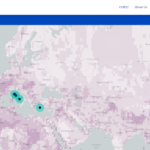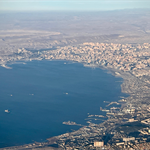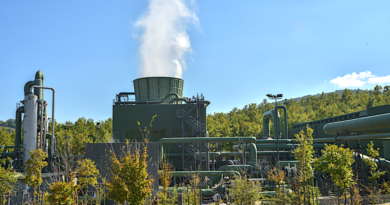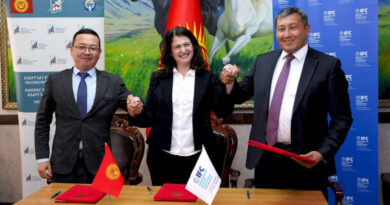Superhot rock setting tone for a potential future for geothermal
Energy Disrupter
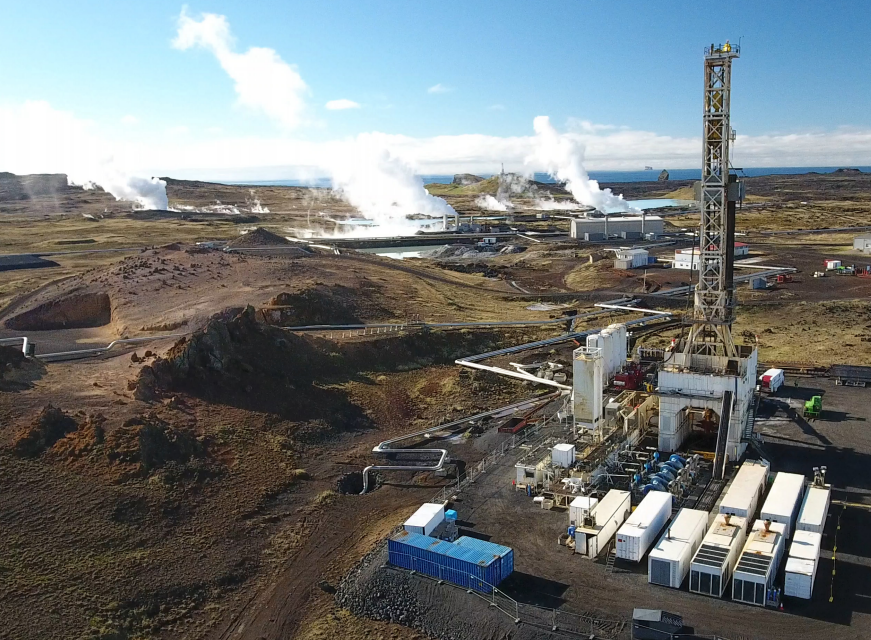
About 99 percent of the globe has a temperature of over 1000 degrees Celsius. The heat is residual heat from the earth’s origin and from the decomposition of radioactive substances. It can be converted into energy, which is renewable, CO2-free and stable. And the deeper we go, the more there is to be gained. Norwegian researchers and technologists are in the race to succeed, so an article shared by SINTEF, a Norwegian multidisciplinary research institute with internationally leading cutting-edge expertise in technology, natural sciences and social sciences.
“If we manage to extract only a small part of the geothermal heat that exists, it will be enough to supply the entire earth with energy. Energy that is clean and safe”, says SINTEF researcher Hieu Nguyen Hoang.
One of the countries that today uses geothermal heat as an important part of the energy system is Iceland. With its volcanic activity, the conditions are well placed to extract geothermal heat here. Iceland is the country in the world with the largest share of its electricity production from geothermal energy.
But scientists and technologists believe the potential is great for other parts of the world as well. The greatest potential is if we succeed in extracting geothermal heat that is as close to the liquid mantle as possible.
For every kilometer you move inwards towards the earth’s core, the temperature rises. In the innermost part of the core, it reaches 5,000 degrees Celsius, says the researcher and project manager at SINTEF. Now they are one step closer to the burning goal.
Together with researchers from several countries, as well as Norwegian Equinor, he and his colleagues have developed well technology that will withstand the extreme heat, so that we can benefit from it on land. The project is called HotCase.
A prerequisite for getting the heat up from the depths is that the water down in the reservoir itself can flow into the well and up to the surface. That is why we work in formations that are relatively porous, and which have enough natural cracks for the water to move in the formation, explains Sturla Sæther in Equinor.>
In the project, the goal has been to create a well design that can withstand both the high temperatures and geological formations that are porous – and therefore can move. The research team has that clear. Technology transfer from the oil industry to the geothermal industry has been an important prerequisite for success.
– If this construction does not withstand the harsh environment, several things can happen: The equipment can corrode, it can be exposed to a hydrogen-driven process that eats up the steel and weakens the strength of the casing. In the worst case, the entire well may collapse.
– The Icelandic well IDDP 2 (Iceland Deep Drilling Project – 2) is used to collect data that forms the basis for important calculations in the Hot Case, says Sturla Sæther who has also been central in the IDDP-2 project in Iceland. Here, the goal has been to find out more about the productivity of deep and extremely hot geothermal reservoirs.
But HotCase can also contribute to the work of giving us safe storage of CO 2 in the subsoil, so-called CCS (Carbon Capture and Storage):
– Such storage requires that the reservoir is completely tight also in the future. Nothing can leak. The knowledge that is created in HotCase will therefore be important when the world really gets started with CCS. We know this is absolutely necessary to achieve the climate goals, says SINTEF researcher Hoang.
High investments – great potential
Extracting geothermal heat is both expensive in terms of exploration, mapping and drilling of wells. However, if successful, electricity produced from geothermal heat can be a profitable alternative to solar and wind.
The cost of geothermal energy can be even lower, if we succeed in drilling down to reservoirs that contain what is called supercritical water. And that is precisely the goal of the IDDP project. This is water that is in a phase where the water is very hot and under high pressure so that it will come to the surface as superheated steam. And that is exactly what the goal is:
“Supercritical water contains enormous amounts of energy and much more than traditional geothermal, where it is a mixture of water and steam that comes to the surface. In such deep reservoirs, the liquid contains so much energy that one can expect to produce between five and ten times as much electricity as in conventional geothermal wells,” says Sæther.
Technology on the edge of what is possible
Extracting the heat found in the really deep geological formations requires technology to make the well last longer without being destroyed. No one has managed to develop – so far.
The Icelanders have tried before, but the attempt was not successful. It is therefore no exaggeration to say that HotCaSe is a project that moves to the edge of what is technologically possible. The conditions that lie within the earth’s interior are something in themselves:
One thing is relentless temperatures of 5-600 degrees Celsius. But here there is also something called supercritical water: When the thermometer passes the critical point which is 374 degrees and the pressure increases to 218 times the air pressure on the surface, the water becomes so-called supercritical.
This water is in a physical form that goes from being liquid, to becoming gas when it flows out of the well. In the supercritical phase, the liquid can be very corrosive under certain chemical conditions. This makes the operation extra demanding.
“Slightly simplified, the casing can be described as the outer walls of the world’s largest and most hardy thermos, which will also be built underground,” says the SINTEF researcher.
– The geothermal well must be designed so that the extreme conditions can be handled. The materials to be used in the outer wall of the geothermal well must have very special properties, and the well must be built in such a way that it can have a service life of at least 20 years for this to be profitable. It must also withstand unforeseen events that can lead to the temperature in the heat reservoir rising for shorter periods, Hoang explains in SINTEF.
Danger of well collapse
A very central part of the geothermal well is what is called the casing system. These are the well’s ‘outer walls’ and usually consist of a steel casing and cement. The walls are designed to protect the well itself.
“Slightly simplified, the casing can be described as the outer walls of the world’s largest and most hardy thermos, which will also be built underground,” says the SINTEF researcher.
The casing must be designed so that the well remains stable in the geological formation. It must also protect the equipment to be sent down, such as sensors and the drilling equipment itself.
– If this construction does not withstand the harsh environment, several things can happen: The equipment can corrode, it can be exposed to a hydrogen-driven process that eats up the steel and weakens the strength of the casing. In the worst case, the entire well could collapse, Hoang explains.
The materials to be used must therefore have very special properties, and the well must be designed and built so that it has a lifespan of at least 20 years for it to be profitable. It must also withstand unforeseen events that can cause extreme temperatures for short periods.
Well construction that can withstand a small “earthquake”
After almost four years of workshops, work with various technology concepts and testing of materials, the team believes that they have a solution ready: A flexibility in well construction. It has been created through technology transfer precisely from the oil industry, and has been developed by the project partner ISOR .
High temperatures mean that the well construction is exposed to high voltage. If the casing can not move when we start up the well, it can have major consequences, we know from other geothermal wells that have collapsed due to stresses in the geology.
– Therefore, we will now build a flexible well that allows a good deal of movement. It reduces the tension in the construction and thus we want to avoid collapse, says Hieu Nguyen Hoang.
Important data basis as a base
An important part of the project has been to develop the analysis tool Casinteg. This is a computer program packed with information about everything from materials to chemical reactions – and thus experiences from the work with the Icelandic well IDDP 2.
– The tool has given us better insight into the physical phenomena that occur in the depths of the earth. But it also gives us important information that makes it possible to choose the right materials in casing and cement that can cope with the flexible construction. All this is first simulated and then checked against the actual conditions and parameters of the operation. Thus, the team is well secured against a future well collapse, says Sturla Sæther in Equinor.
HotCase paves the way for the next generation of geothermal energy
Already in 2017, the geothermal well IDDP-2 in Iceland was completed. It was drilled by Norwegian Equinor and Icelandic partners. The well reached 4650 meters deep. 427 ° C was measured in the well after it was drilled and it is estimated that the reservoir around the well will have temperatures of over 500 degrees Celsius.
This made the well one of the first in the world to reach supercritical conditions. Unfortunately, the casing system was quickly damaged. Therefore, it has not been possible to measure the conditions in the well, nor has it been possible to carry out the planned operational tests.
But project partner Reykjavik Energy, which participates in HotCaSe, has not given up: They now plan to drill the next well: IDDP3 in a couple of years.
Experience from the first two wells, IDDP1 and 2, has shown that the biggest obstacle is the casing. Now the research team hopes that the technology and calculation tools developed in HotCaSe will close the technology gap and make the next project a success. And here Casinteg will play an important role:
– The tool is one of the most important project results for Equinor and everyone who operates with geothermal energy, says Sturla Sæther. Casinteg can quickly calculate the thermal and mechanical forces on the pipe casing in a geothermal well. The tool also has built-in limits for what the construction itself, or design, can withstand, so that the well avoids damage, he adds.
One step closer to CO2 storage
Now the technology from this project will be continued in a new project; IntoWell, which is starting up. This project is part-financed by Equinor and the Research Council and the goal is to develop robust, safe and cost-effective wells for storing CO2 in the subsoil.
This will ensure that CO2 capture can be carried out on a large scale and in the foreseeable future. The knowledge that is created in this project will therefore be important when the world really gets started with CCS.
In this context, Casinteg will be used to evaluate different well concepts for CO 2 storage. Hopefully, large-scale storage of CO2 will bring one big step closer to the CO 2 capture project Langskip . It will help lower the world’s CO2 emissions into the atmosphere and contribute to the fight against irreversible climate change.


